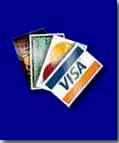 |
Ensure the description of your business that appears on your customers' monthly statements matches the description you use on your website, so that the customer will easily recognize the order when reviewing his bill. This prevents unnecessary disputes arising simply because the customer doesn't recognize your name on his bill.
|
 |
Utilize the address verification system (AVS) which compares the billing address submitted by the cardholder with the card issuer's records. The AVS service is free with some merchant accounts; with others there is a small additional fee.
|
 |
Deposit receipts to your merchant bank promptly - late deposits can result in 'late presentment' chargebacks
|
 |
When manually inputting an order, review the customer's data for anything suspicious. Be especially leery of orders from developing countries such as Indonesia, Russia and other eastern block nations - they statistically have shown a higher than normal number of fraudulent transactions. |
 |
When the customer's shipping address and the credit card billing address do not match, you may want to contact the customer to ask him to explain the difference. |
 |
There are now quite a few services that will sell you fraud prevention software. These may be especially advisable if you have high sales volumes. These software programs, which can be quite sophisticated, examine characteristics of each sales transaction prior to processing, and attempt to predetermine whether the transaction should be declined as risky. Inmaking the determination, they usually look at IP addresses, email domains, proxy servers, zip code validation, reported 'spammers' and the like. To shop for such software just do a quick search on your favorite search engine for 'credit card fraud prevention software". |
 |
IVR Terminals are a fairly new response to reducing chargebacks and fraud. These terminals collect your customer's "voice stamp" or voice authorization before you ship the order. The verification is then e-mailed to you for use should the customer later claim he didn't make the order. |
 |
For retail sales, check the card expiry date. Also, if the card is signed on the back, look to see if the signature there matches that on the sales receipt and if it doesn't, ask for photo identification. |
 |
If your shipping method allows for the collection of a signature upon delivery, see if the shipper will provide you with a copy for your records. |
 |
For first-time big ticket internet sales, ask the customer to fax a copy of his driver's license and credit card. |
 |
Watch out for uncommon ordering activity such as sales of a large number of the same product, rush shipment requests, or multiple orders on the same card within a short time period. |
 |
For retail sales, always make an imprint (swipe the card through the reader - and if the terminal isn't working or the magnetic stripe can't be read, you should key in the information and make an imprint of the embossed information onto the sales receipt using a manual imprinter). Remember that if the receipt doesn't show an imprint of the embossed account number and expiration date, you may be subject to a chargeback. Make just one card imprint for each transaction and should you need to redo a sales receipt due to an error, write 'Void" on the incorrect receipt and destroy it. |
 |
If the customer uses a free email service you may wish to have him confirm the order by phone, because with free email addresses the identity of the person owning the email account is often impossible to ascertain, and if the 'customer' has stolen the card, he can hide behind the free email service's untraceable email address. |
 |
Don't complete a transaction if an authorization request is declined. And should you receive a "Call" message in response to the authorization request, call the authorization center. |
 |
Beware of orders to be shipped to PO Boxes. |
 |
On your website, insert a highly visible warning that you use complex safeguards to protect against credit card fraud. |
 |
Where you are suspicious of a particular transaction, consider:
- requesting the customer's phone number as listed on the credit card account and then call your merchant account provider or the issuing bank to validate the number. Follow that up by phoning the number to confirm that the owner of the card actually placed the order.
- having the customer complete an authorization form and fax it to you with his signature and a copy of both sides of the credit card.
|
 |
In retail environments, use a consistent routine: take the credit card, check its expiration date, run it through the swipe machine, etc. Such a routine can help eliminate chargebacks resulting from your procedural errors. |
 |
A broad guarantee and/or return return policy can significantly reduce customer disputes and consequently chargebacks. |
 |
VISA reports that collecting CVC2 and CVV2 Verification Numbers (the three digit number on the back of the credit card) reduce chargebacks by 26%. |
 |
When a dispute does arise, you'll need adquate documentation to back up your side of the story, so always store all of your records of sales in a safe place.
|



